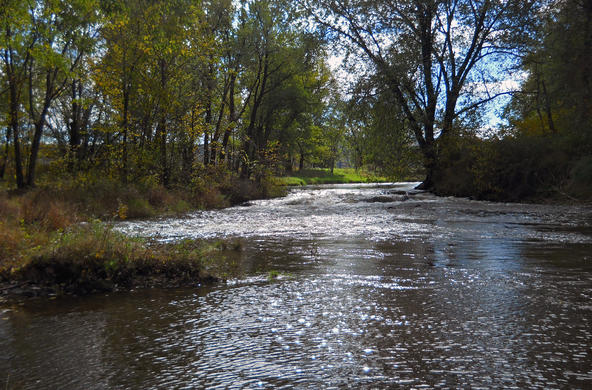The Hudson River includes a stretch where tides affect the river as much at its mouth near Manhattan as 150 miles inland at Troy, N.Y. Most of that section is freshwater, and the strong tidal currents keep it mixed from top to bottom despite its depth.
That’s been the case since well before 1987, when the Cary Institute of Ecosystem Studies in Millbrook, N.Y., began a series of long-term investigations into the Hudson River ecosystem.
Despite everything that appears constant about the river, the system as it was understood when those studies began has since “morphed out of existence,” scientists from the institute wrote in a recently published review of the research.
“It’s not just the Hudson,” said David Strayer, freshwater ecologist with the Cary Institute and lead author of the study. “It’s most of the world’s big rivers. We’re putting a lot of pressure on them and changing them a lot.”
The Hudson just happens to be a good case study because its around 10-times as well studied as other rivers of the same size, Strayer said. An invested citizenry who cares about the river — maybe best exemplified by late folk musician Pete Seeger — helped spur the creation of stable research funding sources, including the nonprofit Hudson River Foundation and New York State’s Hudson River Estuary Program.
As a result, a group of Cary Institute scientists have been lucky enough to study the river continuously for a few decades, Strayer said.
Studies of river ecology tend to cover a scale of a few weeks to a few years, mostly because that’s how funding works, and people have short attention spans, Strayer said. Meanwhile, sensors are increasingly measuring environmental changes on the scale of hours, minutes and even seconds. A study from the Cary group recently published in the journal Bioscience looks to stretch that scale in the other direction and examine how the Hudson has changed over a 25-year span from 1987 to 2012.
The results show a river with an average water temperature that has risen 0.33 degrees Celsius, while sea level at the mouth has risen 74 millimeters. Both of those trends are projected to continue. Meanwhile, more rain and snow falling in the watershed has grown the river’s freshwater flow by a whopping 40 percent.
“That’s a lot,” Strayer said, but it’s also likely part of a pattern of long-term ups and downs rather than a continuing trend tied to human-driven climate change.
It’s not yet clear how those change are affecting the river’s ecology. Their studies show that the warming trend isn’t making the river’s baby fish appear any earlier in the spring as might be expected, but that could be a result of increased flows having an opposite effect.
The studies also detected big changes in water chemistry, including a drop in nitrate concentrations. Nitrate is a coastal pollutant that fuels algae blooms and subsequent dead zones, especially in Chesapeake Bay and the Gulf of Mexico where agencies are spending millions of dollars to cut loads of the nutrient. Yet in the Hudson, nitrate concentrations have fallen by 50 percent without much management effort at all.
“Our group has batted this around quite a lot, about what might be causing this,” Strayer said. “And we don’t really have any good explanations for what’s going on here.”
The Cary group didn’t set out to document changes in nitrate, Strayer said. In fact, they didn’t set out to do any of this as long-term work. The study’s insights are just byproducts of being able to study the river for such a long time, he said.
The ability to keep track of ecosystems like the Hudson as they change over decades in response to human pressures is especially important for good management. But that runs up against a persistent “mental model of ecosystems,” Strayer said, that says we can learn everything there is to know about an ecosystem and manage it based on that knowledge from there on out.
“The idea would be that we would go in and study Lake Erie or the Hudson River or the Mississippi until we got it, and we’re done,” Strayer said. “You’d never expect that from a medical doctor, to say, ‘Well, we worked up all the things on you when you were four years old — we know your cholesterol, we know your blood pressure — you’re good and you don’t have to come back.’”
“We’re seeing a similar morphing and changing in characteristics of the system that you’d have as you change,” he said.





